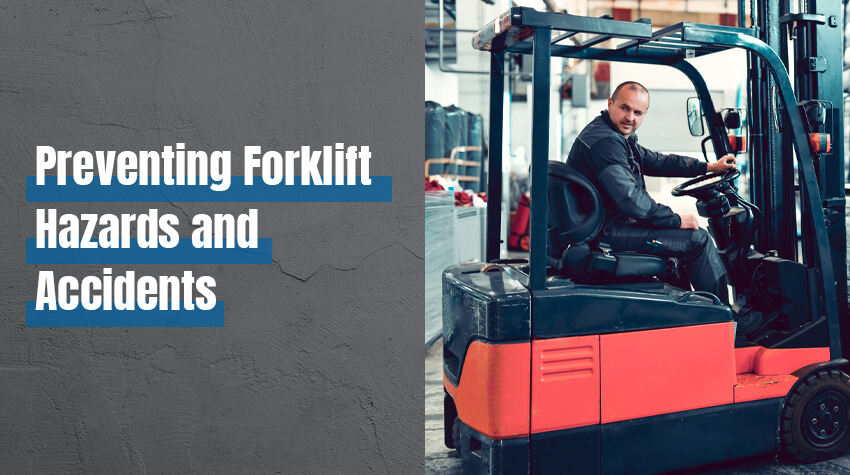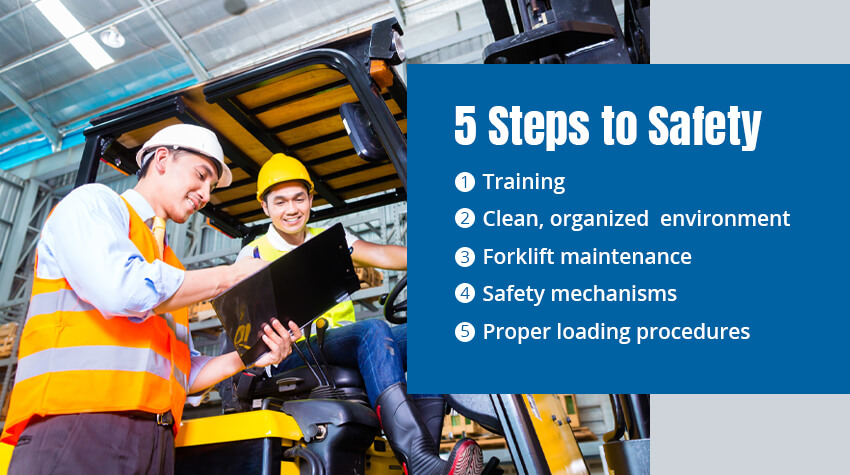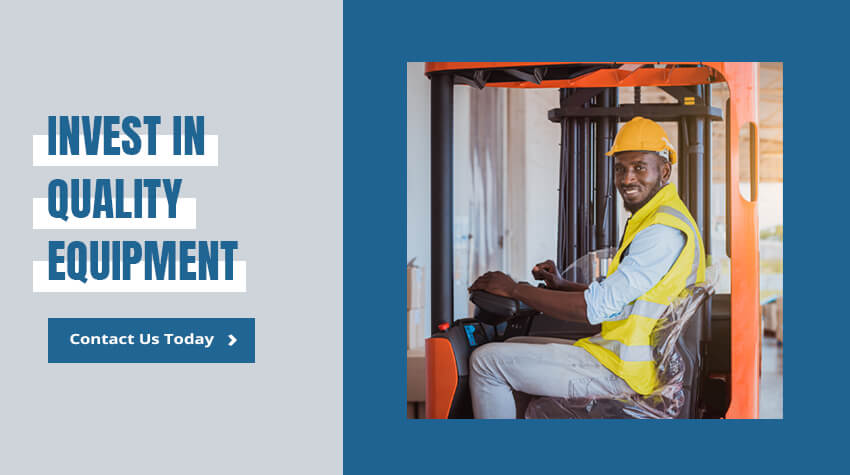
Common Forklift Hazards and Accidents
Forklift accidents make up a large number of workplace incidents each year. In 2020, employers reported 7,290 total nonfatal forklift injuries and 78 forklift-related deaths. On average, employees missed around 17 days of work due to forklift accidents, which is five days more than the average for other injuries. Forklift accidents in the workplace can become expensive for employers, too, who may have to pay for missed wages.
Many factors can lead to forklift injuries. Some causes of forklift accidents include:
- Speeding or irresponsible driving: Employee actions can affect their safety, especially when using power equipment like forklifts. When driving forklifts, speeding and messing around can lead to careless safety practices, putting the driver and nearby employees at risk of injuries. Improper driving techniques, like backing up, turning and braking, can also lead to accidents when employees are unsure how to work the equipment.
- Driving with an elevated load: Forklifts have a carefully calibrated and calculated center of gravity. When loads are higher than that point, they are more likely to become unstable. Tipping forklifts can become dangerous for drivers and passersby, leading to severe injuries.
- Unbalanced or insecure loads: Forklifts have many functions, from transporting goods across warehouses to storing pallets on racks of various heights. Unstable or insecure loads can tip back onto the driver, potentially endangering them. However, these loads can also hurt other employees, increasing the risk of getting injured from falling objects at the warehouse.
- Poor maintenance: Like all power equipment, forklifts require frequent service and care to ensure they function at industry-standard levels. When these actions get overlooked, machines can work improperly, putting employees in dangerous situations when operating forklifts.
- Lack of communication: Warehouses are shared spaces where several employees will work on various tasks simultaneously. Without the proper communication methods, employees might have difficulty navigating spaces while working on powerful equipment like forklifts, leading to collisions and other forklift accidents.
- Warehouse conditions: Poor signage, wet floors and narrow passages can make it challenging for forklift operators to navigate the warehouse. Forklifts can slip or go somewhere they shouldn’t, putting drivers and other employees at risk. Proper signage and pathways can ensure forklifts stay on designated paths.
Understanding the risks accompanying forklift usage can help managers and employees develop increased forklift accident preparedness.
How to Reduce Forklift Accidents
With so many potential dangers to warehouse employees from forklifts, it makes sense that the injury level is so high. However, managers can work to create safer environments and policies when forklifts are in use.

1. Training
When you bring on new employees, you can train them how to interact with forklifts in all situations. For floor employees, you can teach them safe practices for when they are near a forklift, helping keep them safe from common incidents involving forklift operators and other employees. For example, this training might include teaching them warehouse routes that only employees or forklifts take to remain on the appropriate one.
You can help protect all employees by requiring operators to pass specialized forklift training before they can use the machinery. This training can oversee all forklift functions, from steering to securing and delivering loads, helping prevent common forklift accidents. You might require employees to retake this training periodically to remember all safety and operating procedures when using the equipment.
2. Clean, Organized Environment
Clean, organized environments are crucial for creating safe spaces where your employees can carry out daily tasks. Employees should be able to move about their work without the risk of tripping on fallen items or slipping on liquids and debris. However, these hazards can also make it more challenging and dangerous for forklift operators.
Enforce clean pathways where forklifts operate, ensuring they are clear of debris and other obstructions. When warehouses prioritize clean environments, forklift operators can safely transport and store pallets throughout the warehouse without worrying about possible risks.
3. Forklift Maintenance
While much of forklift safety is on the operators and employees, managers can help protect their employees by ensuring forklifts always function at their best. Equipment malfunctions can be dangerous to forklift operators, compromising their safety even when they have the necessary training and follow all guidelines.
Forklifts require regular servicing and maintenance. These practices can help catch malfunctions or poor performance, highlighting parts that need replacing. You can take machines that don’t meet safety and performance standards off rotation, allowing employees to use only the ones that work correctly.
Establish Lockout-Tagout procedures for power equipment that needs servicing or maintenance. Lockout-Tagout mechanisms will physically prevent employees from powering on poorly functioning equipment and clearly mark them with the tags. This system can keep broken equipment off the floor and away from employees, ensuring their safety while they work and interact with machinery.
4. Safety Mechanisms
Warehouses have many procedures they can put into place to ensure increased forklift safety, including:
- Visibility: Accidents and collisions can occur when forklift operators can’t see what’s ahead of them. Ensure operators and other employees have the right equipment to increase visibility, from loading height specifications to proper lighting and visibility vests. Excellent visibility practices can ensure forklift operators can see threats in advance and can take the best course of action.
- Layout and signage: Your warehouse’s layout can protect employees and keep forklift operations efficient. You can create various pathways throughout your warehouse, designating areas to specific procedures like forklift deliveries and on-foot processes. This system can keep employees and forklifts on separate tracks, preventing accidents. You can make these zones clear by adding signs or colors to distinguish between forklift and employee areas.
- Proper storage systems: Prevent falling items and unstable pallets by implementing smart storage systems. Store heavier items on the bottom of racks, while lighter things can go higher, ensuring increased stability when loading and unloading goods.
Introducing these habits to your warehouse can drastically increase forklift safety, covering several aspects of its hazards and protecting all employees.
5. Proper Loading Procedures
How your employees load pallets for transport can determine forklift safety. Falling items can damage client goods and potentially harm surrounding employees. Enforce proper loading procedures when using a forklift. While more items might take fewer trips throughout the warehouse, reiterate how heavier or bulkier loads can become more unstable and prone to falling objects.

Invest in Quality Equipment and Training With Medley Equipment Company
Preventing forklift accidents in warehouses starts with a comprehensive understanding of the risks but requires the right machinery and training to maintain employee safety.
Medley Equipment Company offers several forklift types, allowing you to choose the best equipment for your warehouse. Our comprehensive operator safety training program lets your forklift operators learn the essential skills they’ll need before using your equipment, increasing warehouse safety.
Contact us today to discover how we can help protect your warehouse employees.
